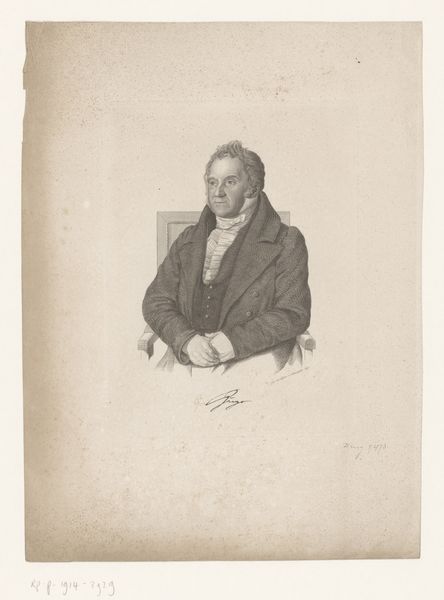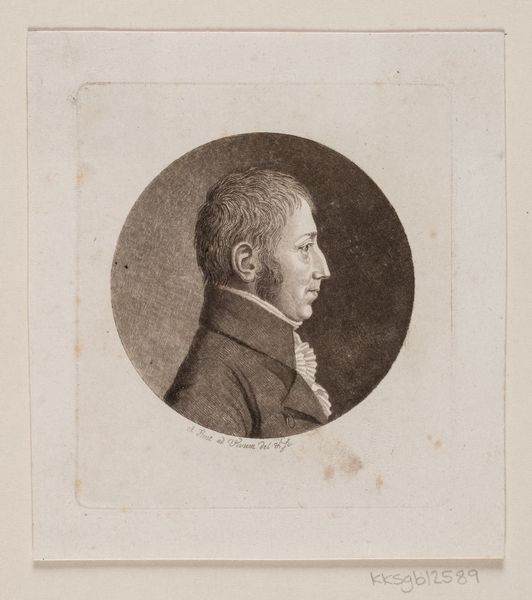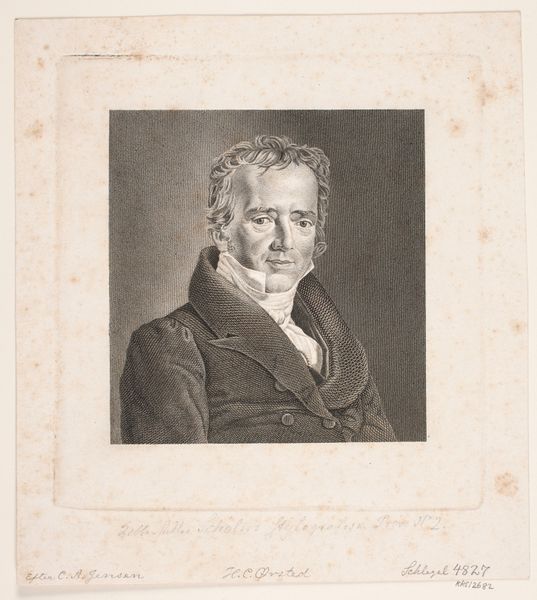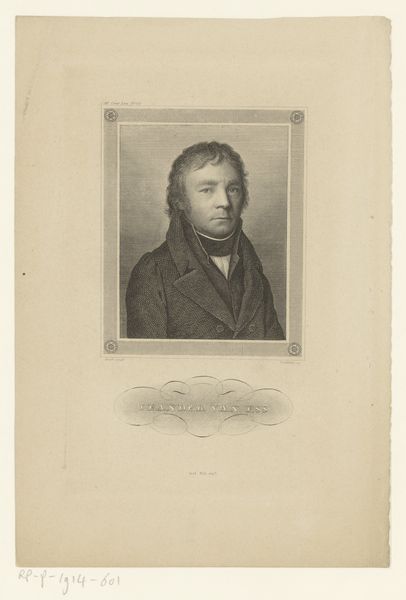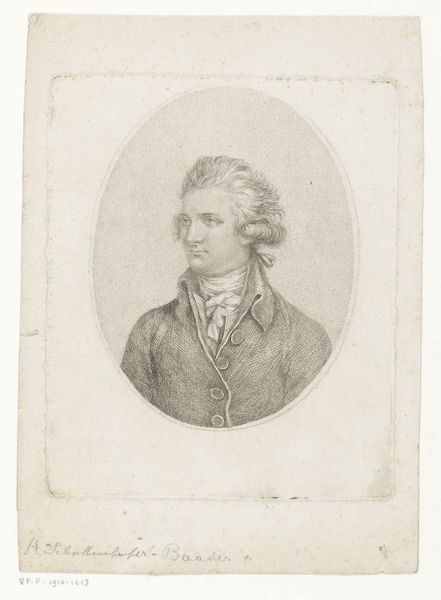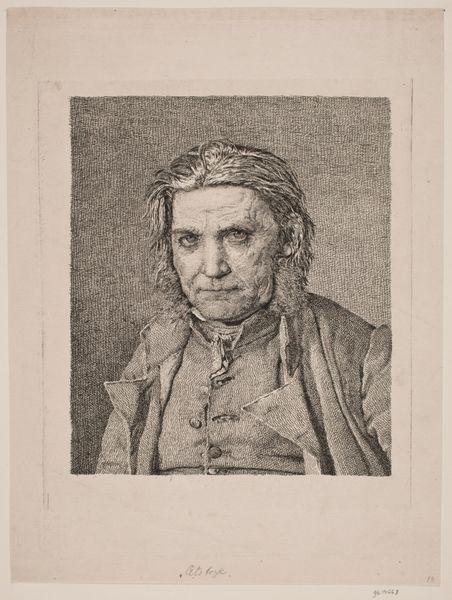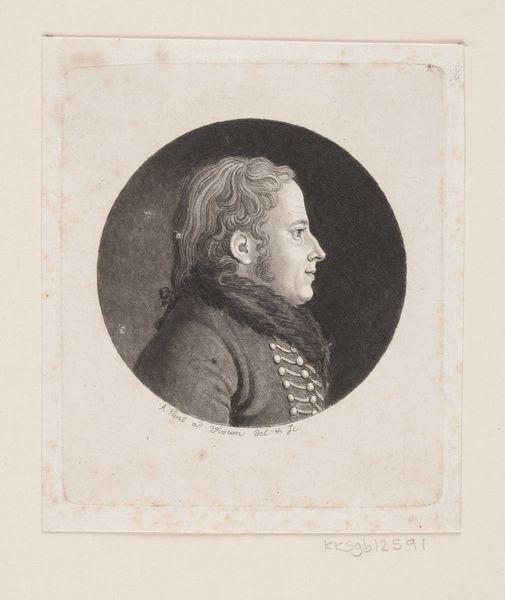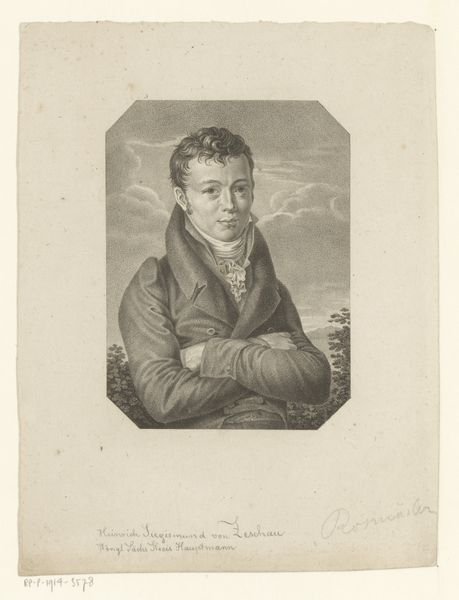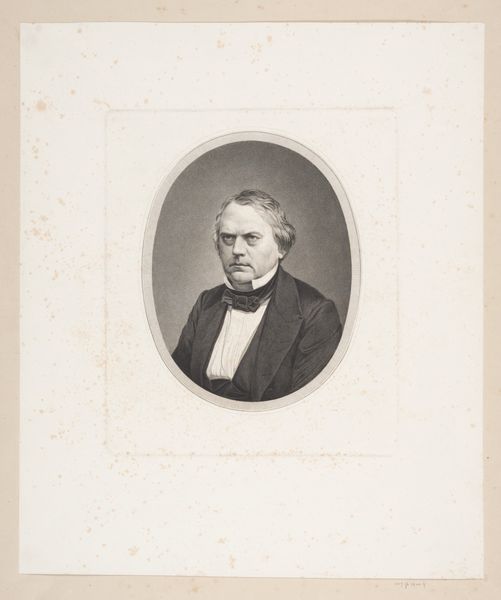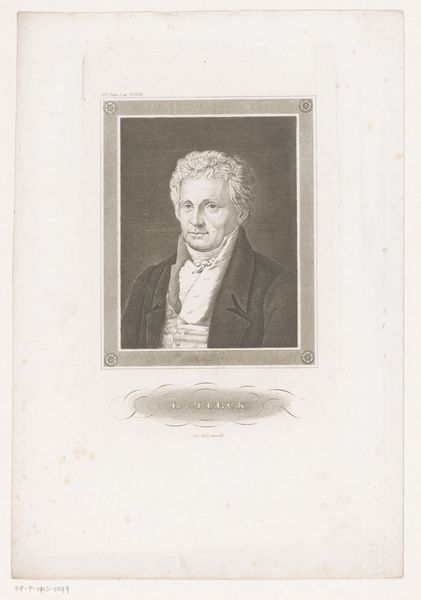
print, engraving
#
portrait
#
self-portrait
# print
#
line
#
engraving
#
realism
Dimensions: 185 mm (height) x 137 mm (width) (plademaal)
H.J. Hammer created this portrait of his father, Skibsføren Hammer, using engraving. Portraits such as these were not just about capturing a likeness; they were about establishing social status and familial pride. Produced in Denmark, this engraving speaks to the rising middle class of the 19th century, where professions like ship captains held considerable social and economic importance. Consider how the artist uses the technique of engraving to create a sense of detail and formality. This was the era of burgeoning art academies and institutions, shaping artistic styles. The choice of portraying his father, a man of profession rather than nobility, might reflect a subtle shift in social values, away from aristocracy and towards the meritocracy of the commercial world. Was Hammer trying to claim social recognition for his family through this portrait? To fully understand this work, one might delve into the maritime history of Denmark or explore the artistic trends and patronage of the time. Art is always embedded in a web of social and institutional relationships.
Comments
No comments
Be the first to comment and join the conversation on the ultimate creative platform.

